Book Review
I'm going to venture a guess that there are more books written about our family than there are most other families out there. I suppose we should be flattered, but I find I spend equal amounts of time cringing from the things I read. Some of the stuff written about us is unadulterated tripe, with no grounding in fact whatsoever, and solidly leaching off the success of The Da Vinci Code. Many of the older books we rely on for genealogy research are valiant attempts to make use of very old and not necessarily well-researched documents. However, some of the books the avid Sinclair genealogist will end up looking at are simply terrific resources.
Since we now have this powerful tool with which to assess these stories, let's have at it.
Morrison, Leonard A.,
“The History of the Sinclair Family in Europe and
America,” Published by Damrell & Upham, 1896,
Reproduced by the
Photoduplication Program of the New England Historic Genealogical
Society,
Boston, Massachusetts. (No ISBN)
The author claims that this book is the first to attempt a
history of the Sinclairs of America. Like many books of this era, he
errs towards flowery sentence structures. He, too, takes our family
back to Rollo. I have no way of knowing if Morrison and R. W.
Saint-Clair met or traded notes. However, he does state that
“from these works [his] information was largely
gathered.”
(p. 21)
Morrison claims that the family held a castle St. Clair on the Epte
river by 894. He claims that this branch from the castle gave rise to
the St. Clairs of Rye, Normandy, the St. Clairs of St. Lo and the Earls
of Senlis, who had great possessions near Paris. (p. 21) He claims that
‘many stalwart knights of this blood circled about William
the
Conqueror on that battle day at Hastings, Oct. 14, 1066.” (p.
21) I’m not certain of his source here as I only
have the
Battle Abbey Roll (and I’m sure that’s all he had).
If we
get away from the usual Rogenwald, Rollo stories from which, in this
case, is clearly sourced, Morrison lists some very useful names that I
haven’t often seen, such as a Radulph Sinclair of 1026. He
does
as good a job as any in identifying General Arthur St. Clair, General
in the American Revolution and Governor of the Northwest Territory
(also, technically, the first President of the United States). (p. 43)
Morrison says that overwhelming evidence points to a shared relative
between General Arthur St. Clair and John Sinclair of Exeter, New
Hampshire who arrived by 1660.
Morrison's is the definitive
book on the Sinclairs of Exeter, New Hampshire and our lineage from
those parts owe him a large debt of gratitude. Morrison traces the
family back to a John Sinkler of 1656. He says this man was part of a
small group of involuntary emigrants from Massachusetts settling with a
Reverend John Wheelwright.
The question is, does the DNA project back up Morrison's assertions? Or does it undo them?
There are at least 5 members of the project who are of our Exeter Lineage. They are part of the DYS390=24 (AMH) line. They are 18/25 markers but 29/37 from the closest other lineage - myself, Stan and the rest of the AMH, so it's likely we don't relate in Scotland and possibly for a couple thousand years. Yet, both being part of the AMH, we likely all traveled the same routes into Scotland, perhaps arriving at different times. There are others in the AMH group, not directly matching the lineage group, who show a slightly closer relationship to this Exeter Lineage.
Could we be looking at the Murkle line? Perhaps, but there's a chance that a line in the DYS390=23 lineage connects there as well and may rule this lineage out.
This group and the Virginia group are not matching on some significant markers. So one of us cannot be part of the Murkel branch in Scotland. Here's how the lineages line up, or rather, don't line up -
DYS
390
391 389ii 447
GATAH4 YCAIIb 456
607
Exeter 24
10 30
24
12
24 16
15
Virginia 24
11 29
25 11
23
17
16
These results show a genetic distance of seven on the
slower
mutating markers on the 25-marker test - quite a distance.
What we may be seeing is one of the many branches that claims to connect to the Earldom Lineage. Or, alternatively, we may be seeing Hermandstown or another branch than Morrison and all the others wanted to connect to just one lineage. However, it's clear that this group plus the Virginia group of DYS390=24 group can't connect in Scotland.
I was going to suggest that this line may have been closer to another group and mutated off of DYS390, having been closer to another lineage, but looking at the results, I don't see enough evidence of this.
Finally, Morrison falls prey to the Rollo bait that all these older books, is seems, must. He wants to get us back to Rollo. I wish I could have been there when they were reviewing the material at hand to see how they made the decisions they made.
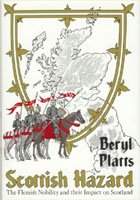
Platts,
Beryll, Scottish Hazard, Proctor Press, Greenwich London
SE10 8ER, available from
Heraldry Today, ISBN: 0 906650 04 6
Ms.
Platts has done
remarkable work here and I quote her widely in any section of this
website regarding Flanders and Normandy. I've seen this work described
as
'somewhat contentious' and I can understand why. Platts makes her
points in no uncertain terms, and some of her ideas clearly over reach.
For instance, not all Scottish nobility came from Flanders.
Platts' greatest achievement in my mind is her understanding of the importance this group of Flemings played in the ultimate history of Scotland and she traces this beautifully with her unassailable work on the heraldic symbols of the Scottish families she follows.
A major point that Platts makes is that almost all the noble families of Scotland were, before that, in England and were forced to flee north. Platts reasonably proved that the noble families of Scotland descended from Flemish ancestors of nobility and not the Normans they were long thought to be. I see all the signs of someone that has taken this theory too far. For instance, Platts also claimed that all of Norway was originally populated by the Flemish and DNA proves this flat wrong.
In fact, the DNA Name Matching project strongly bears out that certain of our lineages match the Lindsays, Grahams and other names of known Flemish descent. I count Ms. Platts work among my prized possessions. I only wish she'd leave it at that but, as you'll see, she takes her theories much further in later work.
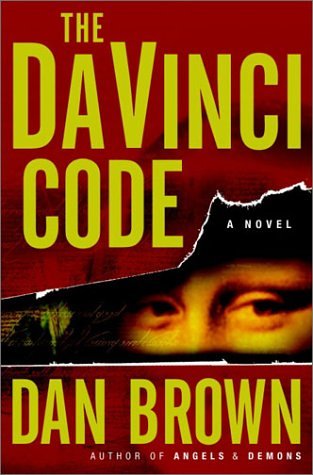
Brown,
Dan, The Da Vinci Code, ISBN 0385-50420-9, Anchor Books, 2003
Books
of fiction get a pass. But it certainly is nice when they seem to have
their
facts straight. The Da Vinci Code is a great read if you're of the
Sinclair/St.
Clair family. As evidenced by the much-publicized lawsuit by Michael
Baigent
and Richard Leigh, Brown borrowed heavily from the sensational
bestseller
"Holy Blood, Holy Grail," reviewed here. Brown makes some obvious
mistakes, such as when he lists two family names that are the only
'remaining'
families of the Bloodline - Plantard and Saint Clair. Most who believe
in such
a Bloodline also include several other families.
If
you're a neophyte of Sinclair lore, I highly recommend this book. I
read it in
36 hours, nearly non-stop - I simply couldn't put it down. The
popularity of
the book and subsequent movie by Tom Hanks caused their share of
problems for
our family as well. More than anything else recently, this book is
responsible
for some of the difficulties encountered by Rosslyn Chapel and the
overcrowding
that still continues there. The book has also caused a ton of
completely silly
"research" to proliferate on the internet. The plot winds up at Rossyn
in their version of a secret crypt.
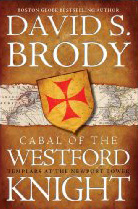
Brody, David, "Cabal
of The Westford Knight: Templars at the Newport Tower," Published by Martin &
Lawrence Press (January 27, 2009) ISBN-10:
0977389871 ISBN-13: 978-0977389872
Any review of a book about Prince Henry St. Clair by
a
member of the St. Clair family may be viewed with some skepticism.
However, I assure you, I am not a 'true believer' of the Prince Henry
St. Clair story. This is why we held the Atlantic Conference
this past Fall in Halifax, Nova Scotia - to find the real evidence of
early trans-Atlantic voyaging. There, I was lucky enough to meet David
and receive an advance copy of his book.
David's writing style is thorougly enjoyable, but this book goes much
further in that it's also a tremendous resource on all matters of this
unusual story of Templar history, the St. Clair family, diffusionism,
petroglyphs, and much more. Being a member of the family who may
descend from Jarl Henry St. Clair, it's difficult to show me new
information, but Mr. Brody does and frames it with a knowledge of the
plot lines of history that put it all in perspective. HIs writing style
is so fluid and the story so gripping that I read cover to cover in a
single 24 hour period.
Can our DNA project help to prove the book accurate? Click that link at
left, "Assessing Family Stories" and look for the Jarl Henry link.
There you'll read all about the evidence, and lack thereof.
I highly recommend this book, both as a fun read and as an historical
resource.
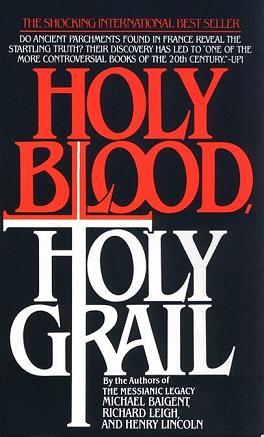
Along
the way, we learn about the Cathars, the Templars, the Prieure de Sion
(including more than one from the St. Clair family). Our name also
comes up
again in their list of the Bloodline families, a longer list than Dan
Brown's -
Godfroi de Bouillon, and the following families: Blanchforts, Gisors,
Saint-Clair, Montesquiou, Montpezat, Poher, Luisignan, Plantard, and
Hapsburg-Lorraine. An interresting thing began to happen when I
compared our
DNA to these families, some of whom are also testing their DNA. You can
read
about it in the Name Matching section of this website.
There
are many other interesting things that the DNA research begins to
prove. For
instance, we clearly have some lineages who descend from the
Merovinginans and
on back to the Salian Franks. Some research in the book has since been
proven
incorrect. For instance the existence of a Priory of Sion was,
apparently,
completely invented by Pierre Plantard in the 1960s as a strange
attempt to
take over the thrown of France. However, some of the names from the
list in the book do
also match the historical record of Templars operating in France at the
time of
the crusades and after. (First person research of Templar trial records)
This
book, plus Holy Blood, Holy Grail, achieved such heights of attention
that
several investigative reports were done of the validity of the
research. CBS
News' 60-Minutes investigated the Priory, and if you go on YouTube and
search
for Niven Sinclair, you'll see a very brief clip of his interview with
National
Geographic.
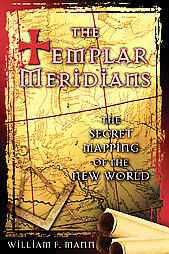
Bill
has become a friend through his association with the Atlantic
Conference of
2008. In this book, he makes good use of his extensive background with
Freemasonry and
with his deep connections with Native leaders across Canada. Bill
weaves together
an extensive theory that the Templars indeed had the motive, the method
and
strong motivation to come to North America. Led by Prince Henry St.
Clair, they
established both a safe haven for the Merovingian Dynasty and mining
operations
which led to a military edge over their opponents back in Europe. These
Templars left clues all over North America recognizable to those
Templars who
might follow. As part of the Atlantic Conference, Bill heard
presentations by
the likes of Scott Wolter who has proved the Kensington Runestone to be
just
such an artifact.
Bill's
book is one of the first I had read that clarified the importance of
economic
motivations as a reason these explorers might have crossed the North Atlantic. Mark Kurlanski's
"Cod" applied this to the early Basque crossings. And while DNA
evidence can't directly prove any of this, it's still very interesting
to keep
in mind for future research. For instance, if these Templars were
mining Copper
long term in, for instance, the Lake Memphrémagog area, they
might have had children with
Native women and left a European YDNA signature. I'm currently looking
into the
YDNA signatures of Native tribes and have found research that indicates
a very
high percentage of European YDNA (R1b) in some tribes. I have not yet
looked
into the tribes indigenous to the areas around these early copper mines
but this would make
a very good area of study.
Saint-Clair,
Roland William, "Saint-Clairs of the Isles, Being a History of the
Sea-Kings of Orkney and Their Scottish Successors fo the Sirname
Sinclair," H. Brett, General Printer and Publisher, Shortland
and Fort
Streets, Auckland, New Zealand, 1898.
The
book is now online via Fiona (click the link just above), but I
recommend
getting the hardcopy as well. For
anyone working on their paper genealogy, this book is the bible. It has
all 34
Cadet branches (c. 1700) of the family represented. and goes all the
way back to
Rollo and beyond. "For the ancestral home of the Orcadien Jarls we must
voyage to the Norwegian Uplands, fitting cradle for this primeval line,
noble
even beyond the breath of tradition."
This is the sort of flowery prose that was standard fare
for the time in
which this was written. The Sinclairs of England also engages in such
language.
While this language makes the book terrifically fun to read, knowing
how
grossly wrong the basic foundation of this book is makes the use of
language
very difficult - more on that later.
R.W.'s
work is based on the writing of a Father Richard Augustis Hay, son of a
woman
who married into the Earldom Lineage and, being quite proud of this new
family,
wanted to write it all down. Lucky for us, as the originals from which
he wrote
were lost in a fire.
This
work suffers from what almost every book of its kind inevitably must.
It is,
after all, written by a genealogist and their goal, above all others,
is to get
back to the source, the one common ancestor of the entire family. For
R.W., and
thousands of Sinclairs who followed, this common ancestor is Rollo.
And,
according to R.W., all the lines of the Sinclair family come from this
man. My
major complaint of the book, when compared to the DNA research is that
it
attempts to paint our family as all related and we clearly are not. We
have 5
or more lineages who were, many of them, in Scotland and undoubtedly
living in
these cadet branches of the family. They had the name but don't all
share Rollo as a common ancestor. In fact, some don't connect for 4,000
years, others for over 30,000. years.
The book has 546 pages. The first history of the house goes back to 850 in Norway. It traces the Dukes of Normandy; the Sea Kings of Orkney from 871 through 1471; the St. Clairs of the Isles, including the Orcadian and Zetland branches; the Earls of Caithness and their cadet branches, including the Sinclairs of Stemster, Murkle, Assery, etc.; the baronetical branches; the Longformacus line; the Lords of Rosslin; the Barons of Ravenscraig; the Lords Sinclair; the Lords of Herdmanston; the family in Sweden and Alsace; the Irish, English, and North American Sinclairs; and related Orcadian families. Also included are extended genealogical tables showing all the major and minor families. He leaves us hanging on the Hermandstoune line, and I have to believe he knew this in the way he glossed over the issue. The DNA project, however, may have solved this line.
Interestingly, this book, the bible of
our family, does not mention the Jarl Henry St. Clair voyage to North
America. The research being done in 1898, Frederick Pohl's work was not
done and the story of the Zeno Narrative and others were not widely
known.
In
broad terms, Margaret Stokes has said that our family, despite that
traced by
R.W. Saint-Clair, shows 5 likely groups that may not all relate. Two in
England, then Ireland, Rosslyn-Caithness, then Hermandstone. I
personally believe
we’ll find even more as time goes by and this alone makes it
difficult for me
to regard R.W.’s book as an accurate account of our family before the 1200's.
However, since then, it is an
incredible source of actual records of those bearing our name in
Scotland and
other areas. In that alone, it is an invaluable resource.
I
consider this book essential for any member of the family. It was one
of my
first purchases when beginning my genealogy and it's very tattered from
use.
Platts,
Beryll - Sinclair, The Vikings and The Flemings, an upcoming monograph
to be
published by the Procter Press, © Beryl Platts 2008
Sometime
in the next couple years, the Procter Press will be publishing a series
of
monographs on famous families of Scotland. Mrs. Beryl Platts, noted
author of
such works as Scottish Hazard, has been exchanging notes with me since
I wrote
to offer some support of her theories that the Norse are of Flemish
origins. I
must clarify that my support of this theory is limited to the southern
coastal
lands of Sweden and Norway due to the presence of the R1b Hg there. In
no way
were all Norse of Western European origins. Mrs. Platts has been kind
enough to
send me an advance draft of her manuscript that deals with our family.
As this
will likely be published soon, I’m compelled to critique it.
Mrs.
Platts states that the Sinclairs, like other old Scottish families,
“fell victim
to unscrupulous monks who wrote what their patrons wanted to
read.” Citing
Professor Bryan Sykes, we learn that Somerled was not a Celtic
chieftian. This
is indeed made clear by Mr. Sykes YDNA study. If I’m reading
her correctly, she
is stating that William, Earl of Rosslin (1350) is a direct YDNA
descendant of
Somerled. This link appears to be made via St. Clair’s
sister, Marjorie, who
was to become Countess of Orkney and Caithness via her marriage to Sir
William.
While her theory would mean that the Ross family are the R1b
descendants of
an
ancient Flemish line, the male descendants of Sir William would have
received
no YDNA from Somerled. This theory shows a complete lack of
understanding of
DNA, and her use of it as support is divisive at best.
Mrs.
Platts goes on to eventually arrive at what appears to be her key
point -
William St. Clair, builder of Rosslyn is not of Viking origins and was,
in her
opinion, embarrassed by his family’s association with the
Viking ‘scourge.’
Thus, Sir William St. Clair needed to find a
way to “remove the Viking stain from his family.”
The title he bore in Orkney
compelled him to claim a Viking origin. Yet his (very loosely defined)
association with a heraldic symbol of the Rampant Lion of Hainaut means
he was,
claims Mrs. Platt, of Flemish origins. Mrs. Platts goes on to say that
the
building of Rosslyn was Sir William’s attempt to visually
explain his
predicament. Also, she says that he attempted to equate the Vikings
with the
Templars and that this was one of his great strokes of genius. His
solution was
to “produce a history” that tied the heroic
Templars to the wicked Vikings,
thus erasing the stain of the Vikings and, with it, the stain attached
to our
“false history” as a family of Viking origins.
I
would not write this lengthy review, were not Mrs. Platts’
opinions to be
published as though they are fact. She is an extremely readable author.
Her
scholarship in tying the genealogy of Scottish families back to their
Flemish
origins via the often overlooked history of heraldry is, in my opinion,
unassailable. But this monograph appears to me to be an exercise in
clutching
at straws. Countless notions are stated as fact with nary a source for
the
reader to study.
I wish the army of authors eager to rewrite the history of the Sinclair family would take a long holiday until the factual work of our DNA study can be fully understood. Much transpired to attract the different Haplogroups of our family to those areas of Normandy, Southern France, and Flanders from which their claimed their surname and became fodder for today’s historians to do battle over their interpretations of history. But this much is certain - it is too soon for any author with an agenda to claim that DNA proves their opinion to be the correct one.
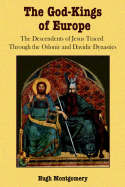
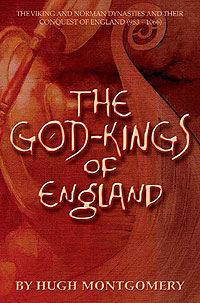
Montgomery, Hugh, "The God
Kings of Europe, the Descendents of
Jesus Traced Through the Odonic and Davidic Dynasties," published by
The Book Tree, San Diego, California, 2006, ISBN 978-1-58509-109-6
Montgomery, Hugh, "The God Kings of England, the Viking and NOrman
Dynasties and their Conquest of England (983-1066), The Temple
Publications, Somerset, UK, 2007, ISBN 978-0-9555970-4-6
I write about these books, and all that I review in this report, because they bring up the Sinclair / St. Clair family. These books bring up our name in their discussion of the Odonic and Davidic lineages.
I
have great difficulty reading Montgomery's work. In my opinion, his
writing jumps around
and I can never quite arrive at the point. Montgomery seems to be
making so
many different points that it's very hard to follow. Luckily, I found a
video of Hugh summarizing all his
theories and
his chronology of events and that makes it much easier for me to
analyze his central theme against the DNA of the families in the books.
And analyze it I must because we're a
part of his story. Here's a link to the video - Video
filmed at the
Stars
& Stones Forum
A
description from the jacket of his second book helps a bit - "Following
on from The God-Kings of
Europe, The
God-Kings of England, continues the Saga of the great Ulvungar Dynasty.
It
shows that there was a plan to counter the hegemony of Roman
Christianity, by
counter attacking, first with Viking raids and later by conquest and
settlement.
This is the tale of the Ulvungars and their attempt to conquer England,
under
the leadership of Danish Kings such as Sweyn Forkbeard and Canute. They
were
opposed by their Odonic Anglo-Saxon cousins such as Alfred and
Aethelred. The
Ulvungars would take control by force of arms. One branch would take
England;
another would take control of Normandy. Ultimately, they would combine
after
the Battle of Hastings in the Anglo-Norman Dynasty that would found the
Angevin
Empire."
From what I've been able to discern from a chat group on which Hugh
posts, he has found a document in which Mary, wife of Jesus (yes, that Jesus),
is angry that her daughter has been raped and aims to punish
the descendents of this man's line saying, "Thy see shall be estranged
from me and thine inheritance taken from thee. They see shall end by
the piercing of an eye and so shall thine inheritance cease." This
plan, and the taking back of
the rightful lands of the Ulvungars, apparently continued for over 1000
years.
Mind you, there's not
a trace of written
evidence that this "plan" was passed from generation to generation over
the thousand years that transpired in medieval Europe. We are led to
believe that the actions of the characters in history are proof enough
that the plan was being carried out by successive generations.
The
God-Kings of Outremer Paperbck, 192 pages, Published by
Book Tree, October, 208, Paperback: 192 pages, ISBN-10:
1585091197, ISBN-13: 978-1585091195
(Hugh's third book,
just being published as of this writing. I have not read it. Outremer
was the name the
western knights used for Palestine.)
There's a Brick Out of Place and It's Called CCR5-Delta-32
One of my clients had a great phrase he used when he'd find a mistake in our advertising. "If you find one brick out of place, you'd better check the entire wall."
One
of Hugh’s notions is that, in Babylon, a Haemorrhagic Plague
occurred known as
'The Hand of Marduk.' He goes on to say that some members
'built up an immunity to this
plague,' with
a mutation called CCR5-Delta 32, and this plague caused some, who had
'built
up' this immunity to exit Babylon. Thus, in one fell swoop, we've
solved the ancient biblical question of the tower of Babel.
For
a part of the population of Babylon to build up this immunity in
sufficient
numbers to survive it would have meant that the mutation would have had
to have
already been in a significant number of the population. This means that
the
mutation would have had to occur at a predictable period before the
time of
Babylon. Then, what caused those with the mutation to leave? Did they
recognize
they had a mutation? Were they the only ones living in Babylon when
they left?
Hugh
states that we can trace the migration of the residents of Babel due to
the
CCR5-delta-32 mutation. This is simply not scientifically
valid. If
Hugh is right about the source of the CCR5-Delta-32 mutation beginning
in
Babel, then it would be most concentrated in the
area of Babel, the Hebrew name for Babylon or Akkadian Babilu, to this
very day.
(See map below in red).
Unfortunately, it’s most
concentrated in Northwestern Europe
(shown in blue). This leaves a rather large hole in the
theory
unless, like Hugh, you want to claim that this group kept to themselves
for
several thousand years and did not intermarry with those around them in
Europe
as they moved out of the Middle East and into northwestern Europe. If
this were the case, they would be the only
people in
history to do so. The source of CCR5-Delta-32 also clarifies that it is
a post-LGM event (meaning it happened after the retreat of the last ice
age, about 20,000 years ago, not at the time of Babel)
The
next part of the theory that's easy to examine is the idea
that William
the Conqueror was descended of the Visigoths. This can be examined by
looking
at the known descendants of families that can make a good claim to
kinship with
the Conqueror. This is discussed in the section "Assessing Family
Stories." While I can’t
completely solve the haplotype of the Conqueror, I make a very good
guess using
the available data. I don’t find compelling evidence at all
that either he or Rollo were Visigoth
descendants.
Hugh’s books are
fun to read from the prospective of a provisional
historian. He covers (read:
rambles) a lot of ground, so it takes a while to review it
all. But then there are these other issues I'd expect an
historian to understand. For instance, Hugh
states that the Vikings 'raped their way across Europe...' I'm
sorry. I
just have to say that this view of the Norse (Vikings) has become
completely outdated.
Leading historians now understand that the Norse culture did not
consist
entirely of rape and pillage. Hollywood painted the Viking culture this
way. Most Norse
were very adaptive and this shows in how they adopted many aspects of
the cultures into which they moved.
A Second Brick?
Hugh
is claiming that Rollo's ancestor is Ataulf. And he is claiming that
Rollo is a
direct descendant of the Visigoths and, thus, back to Babel. He then
goes on to
state that William, Duke of Normandy and King of England is a direct
descendant
of this line and, thus, a Visigoth and a descendant of the
CCR5-delta-32 family
of Bebel. And, now, Hugh wraps up this theory with the thought that,
when
Rollo's descendant becomes Duke of Normandy, he's simply taking back
his
ancestor's realm. Also,
when Duke
William takes England, he's taking back his ancestor's kingdoms of
Mercia,
East-Angles and East-Saxonony. What prodigious memories these folks
had, to spend over a thousand years completing the revenge
of the wife of Jesus.
So,
Hugh states quite clearly that William, Duke of Normandy is a Visigoth.
This
should be easy to prove. We'll simply examine the best bets for
descendants of Duke William.
Hugh
then claims that all those who led the capture of Jerusalem (that's right, every single one of
the leaders!!)
in 1099
were of the
Ulvungar Dynasty, therefore Visigoths. (I love lists of names because
it gives
us something with which to do DNA research) -
Duke
William -(Almost certainly not descended of Visigoths)
Bohemond
of Taranto, Hautville - (A chance they're Visigoth, but most of the
family in their DNA study are not)
Raymond
of St. Giles - (Haven't had time to look yet)
Godfrey
& Baldwin of Boulogne - (I can prove beyond any doubt that they
are not descended of Visigoths)
Raymond
of Toulouse - (Haven't had time to look yet)
If
Montgomery is correct, then each of these families with descendents
alove today, should match the known DNA of the Visigoths. Yet, you'll
see in other sections of this report that almost all of them do not
and, of those families who show participants with Visigoth DNA, only a
few of their entire project are close. Another brick is out of
place.
Source
– Video
filmed at the Stars Stones Forum, Bury St Edmunds,
Suffolk, UK,
produced by Holistic Channel, www.HolisticChannel.org.uk 2008
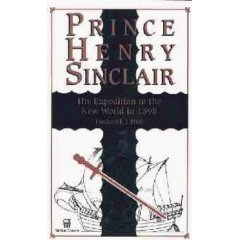
Pohl, Frederick J., Prince Henry Sinclair, His Expedition to the New World in 1398, Nimbus Publishing Limited, Halifax, Nova Scotia, ISBN 1-55109-122-4, Originally published: New York: C.N. Potter, 1967.
In
our family, other than Rowland William Saint-Clair’s book,
this one
is considered the bible. Among my friends and close associates in the
Sinclair
family, so much hinges on this book that I originally dreaded reading
it. It’s
so important to members of our family I was afraid I would find
problems with
his theories. Luckily, there were no theories - everything was stated
as
absolute fact. As I read through the pages I was quickly taken in with
Pohl’s
wonderful writing style and before I knew it, I was halfway through the
book.
Pohl’s strength is in the way he provides context for the
documents he was able
to dig out regarding ‘Prince Henry’ and I very much
enjoyed those parts of the
book. However, and I know I’ll be flogged for writing this,
in my opinion he
veers towards fantasy in too many areas. I believe he’s
bending the facts to
fit his pre-conceived notion of the truth, in particular with the
translation
of the Zichmni to read Sinclair, in inventing the date of the arrival,
in
translating the ancient story of Glooscap to fit the Prince Henry
timeline and
events, in Prince Henry’s attack of lands he had promised to
defend (Shetland),
and in many other areas. The main weakness is in using the Zeno
Narrative and
map as his primary sources. To many scholars, this narrative has
serious
problems and the map is far worse. It doesn’t even show the
Orkney Islands,
home of the story’s hero. It invents entire islands, like
Frislanda, which
cannot be explained. And it, too, was re-created by an adult who
“regretted”
tearing it and the documents up when he was a small child.
No
reading of this book is complete without also reading the
contrary views of
Brian Smith. Click that link to find his views of the story.
Much
as I admire a good retort based on what appears to be well-researched
evidence
to the contrary, I must point out that Brian Smith says, "My impression
of
Henry Sinclair, from looking at the documents that have survived about
him, is
that he was a minor figure. He played little or no part in the politics
of his
native country or of Norway. His name doesn't appear in the records of
the
Scottish parliament or exchequer, and he only figured in Norwegian
affairs on a
few ceremonial occasions." 149
Yet,
we know from such documents as the Declaration of Arbroath that the St.
Clair
family was, in fact, important. Among the signers of the Declaration of
Arbroath, they were one of
51 of the most important leaders of Scotland at the time. We also know
that the
Sinclairs were often called to England and to Norway. We know that the
position
of Jarl was considered very important in Norway. Niven has mentioned a
document
that makes clear that the Earl met with Henry VIII and, the meeting
being
deemed by the king too important for Cardinal Wolsey’s ears,
he was asked to
leave the room. Clearly the family was important and this weakens
Smith’s
arguments. Where one brick is out of place, one must check the entire
wall.
Smith
makes many good arguments. This is one - 'Less than fifty years after
Henry's
death his grandson commissioned a genealogy of the Sinclair family,
full of
praise of his ancestors' achievements. Did he mention his grandfather's
alleged
maritime exploits? He did not.'
So how do we account for this? Some have suggested that
the family was
quiet because they were keeping a great secret. This isn't the first
time such
mysteries have surfaced. In 1546, Marie de Guise wrote one of her
letters to
William St Clair. The letter included this remarkable passage:
"Likewise
that we shall be Leal and trew Maistres to him, his Counsill and Secret
shewn
to us we sall keep secret." In 1556, she sent William St Clair to
France,
to find more support for her daughter, Mary, Queen of Scots. It
underlines the
close relationship Marie de Guise and the Sinclairs had in the defence
of the
Scottish monarchy, a cause which was always close to the heart of the
Sinclairs. 150
The
question is what "The Secret" might be. There is some speculation
that this included jewels, which had gone missing and of which the
Sinclairs
were suspected for being involved in. However, it seems that such a
secret
would not be referred to as "The Secret", nor would it require a
letter from the Queen Regent, pledging her cause to Sinclair. Rather
than
Sinclair pledging his loyalty to the Queen Regent, it is the Queen
Regent
saying she will obey Sinclair and not betray him.
My
complete evaluation of the Prince Henry story is in the section
"Assessing Family Stories." Pohl’s book brought
several new
pearls of knowledge that I had not yet known and can now be evaluated
here. On page 22 the book mentions that Henry’s father had to
hire himself and some of his key men out to fight a war with the
Teutonic Knights in Prussia. This became necessary to pay his share of
the ransom demanded by the English for the safe return of the Scottish
king David II. Pohl cites no source for this, but he lists several
important figures leading a total company of sixty horsemen and a
strong body of footmen. The leaders were, Sir William Keith, Marshal of
Scotland, Sir Alexander Lindsay, Sir Robert Clifford, and Sir Alexander
Montgomery. The names Clifford, and Lindsay show up very strongly in
our name matching project, lending credence to the possibility that
these families had purposeful intermarriage sometime in the past,
perhaps at the time of Jarl Henry.
The other interesting piece of information I could work with to compare
with our DNA project is a mention in the Sources and Notes section,
“The Winning of Shetland,” #7 (p. 196). Here, Pohl
has
found a fact about Henry sending his half brother, David Sinclair, son
of Isabella Sparra in Orkney and Shetland away to England.
“To
all who shall see or hear these presents, Henry Sinclair, Earl of
Orkney and Lord of Roslin, safety in the Lord! I concede to my brother,
David Sinclair, for life, because of his claim through our mother
Isabella Sparra in Orkney and Shetland, all the lands of Newburgh and
Auchdale in Aberdeenshire, to return to me if his heirs
fail.”
(his source - Regesta Dip. Hist. Danicae, April 23, 1391). Here we have
a Sinclair likely not of the same DNA stock as Prince Henry, as
he’s listed as a half brother. This could be one of many
reasons
for there being S21 in our family in the Shetlands who carry the
Sinclair name to this day. HOWEVER...THIS JUST IN:
Nina, a member of our Google
group, has found an original latin document from Regesta Dip, Hist.
Danicae, dated 23 April 1391, as printed in "Records of the Earldom of
Orkney" that leads to a different conclusion. It leaves open for debate
the reasons for S21 north of Caithness. See the link above left
"Assessing Family Stories" then click "Jarl Henry St. Clair" to read
the document Nina sent. Thanks Nina !!
With regard to the DNA project, the Jarl Henry story will be best
proven or disproved with DNA testing among Native populations such as
the Mi’kmaq, the Narragansett and others. That said, these
name
matches among Henry’s closest associates bears close
inspection.
Wallace-Murphy,
Tim & Hopkins, Marilyn, “Rosslyn, Guardian of the
Secrets of
the Holy Grail,” published by Element Books Limited, 2000
ISBN
0-7607-2047-9
This is a nice spiritual journeys. Robert Lomas, author of the Hiram
Key, gave the book praise in a quote on it’s jacket. In a
quest
for facts to support DNA and real records research, I did not find it
useful. There are many instances of
“if, then” statements, making it difficult to take
as a
serious piece of scholarly research.
Home | Contact
